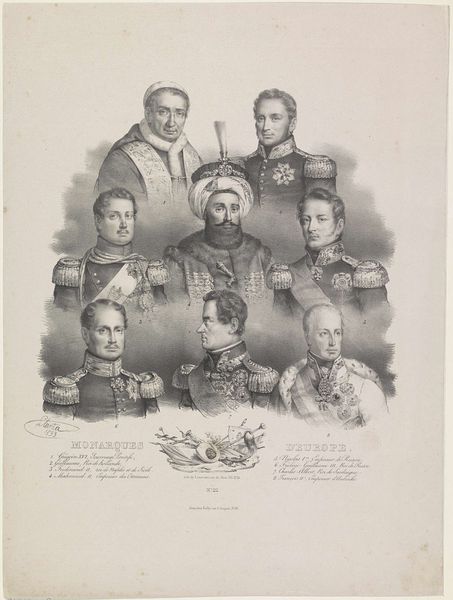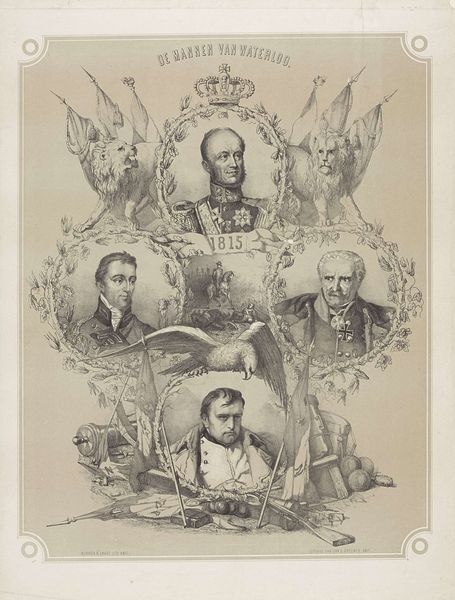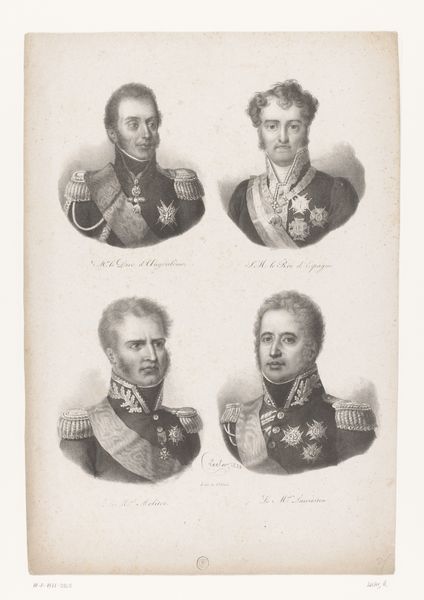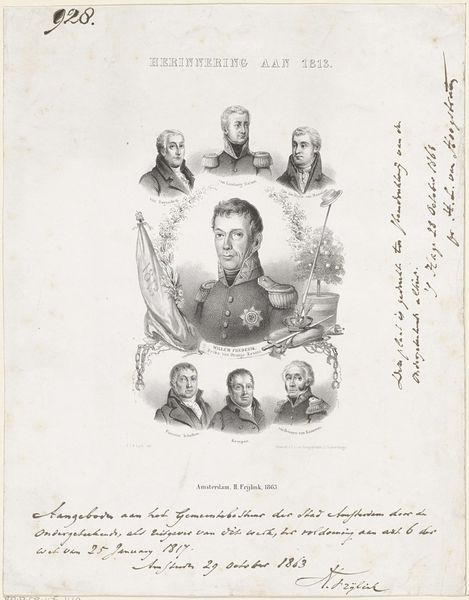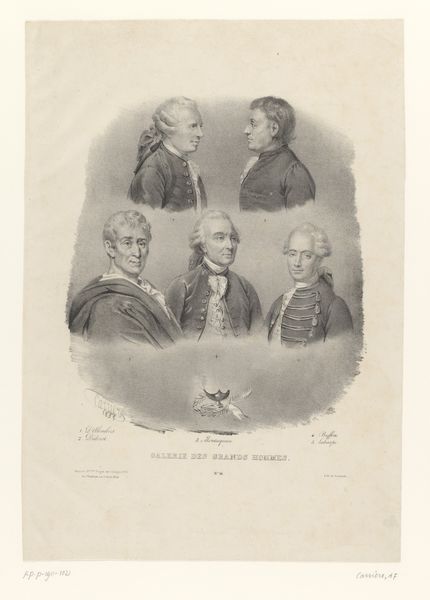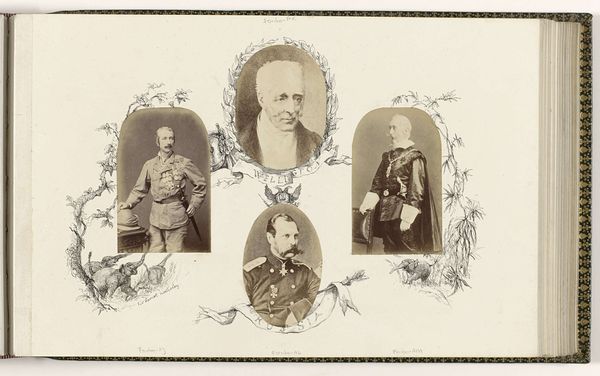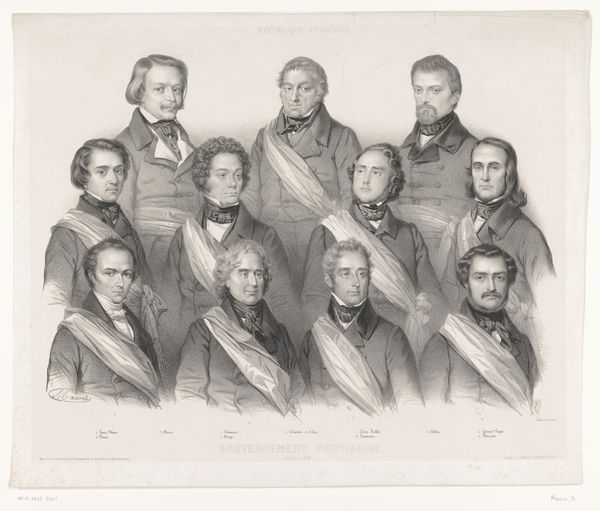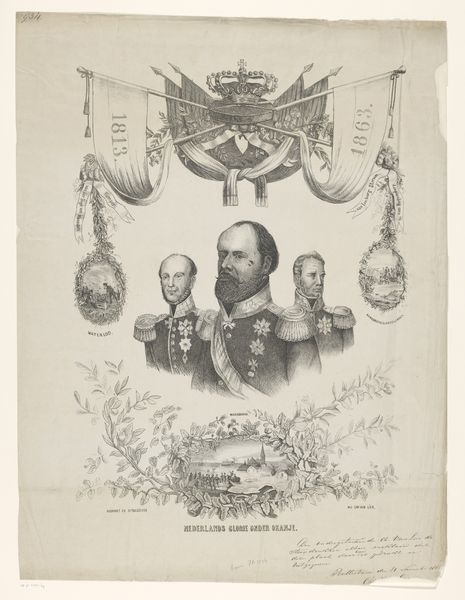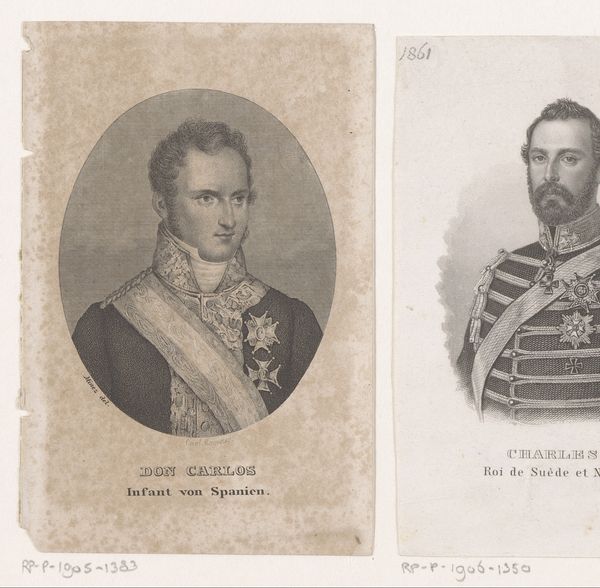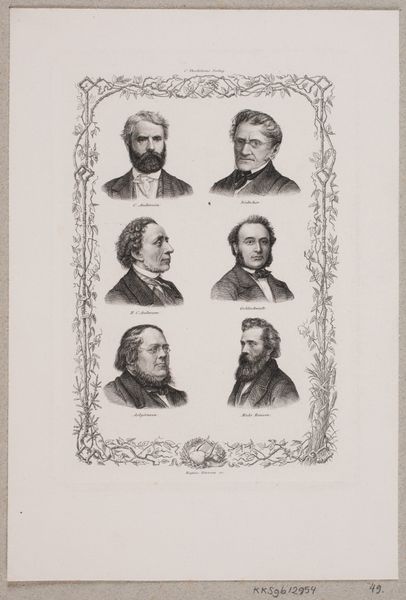
drawing, graphic-art, print, engraving
#
portrait
#
drawing
#
graphic-art
#
neoclacissism
# print
#
pencil sketch
#
old engraving style
#
group-portraits
#
19th century
#
history-painting
#
academic-art
#
engraving
Dimensions: height 448 mm, width 311 mm
Copyright: Rijks Museum: Open Domain
Editor: This is "Vijf portretten van maarschalken en generaals" or "Five portraits of marshals and generals" by Antoine Fulcrand Carrière, from 1835. It's an engraving. I’m immediately struck by the hierarchical composition. The two generals at the top almost seem to float above the others. What do you see in this piece, considering the printmaking process? Curator: I'm immediately drawn to the implications of producing this image as a print. Consider the economic and social context: printmaking allowed for the widespread distribution of these portraits. The materials used – the paper, the ink, the metal plate for the engraving – they all speak to a specific mode of production, where images of power became accessible, as commodities, to a wider audience. This shifts the aura surrounding these military figures, doesn’t it? Editor: So, instead of solely focusing on these individuals, you’re highlighting how the mechanics of creating the print democratizes their image? Curator: Precisely! It's not just about commemorating these figures. We have to consider who commissioned the work, who printed it, who bought it, and how the act of reproduction affected the reception of these men. Look at the repetitive details in their uniforms – think of the artisan hours that must have been involved. That labor, often invisible, is crucial to our understanding of this artwork. Does viewing it as a manufactured object challenge your initial reading of its mood? Editor: It definitely adds a new layer! The engraving isn't just a neutral reproduction, but an object reflecting a complex web of labor and consumption. It makes me wonder about the social status of people who acquired a print like this one, or its implications in influencing public opinion. Curator: Indeed. Examining the materiality reveals that the print acted as more than just a commemorative piece. It became a tool, circulating ideas and shaping perceptions within a growing consumer culture. It prompts questions about art’s broader purpose. Editor: Thanks, I will definitely keep that in mind for future analysis!
Comments
No comments
Be the first to comment and join the conversation on the ultimate creative platform.
